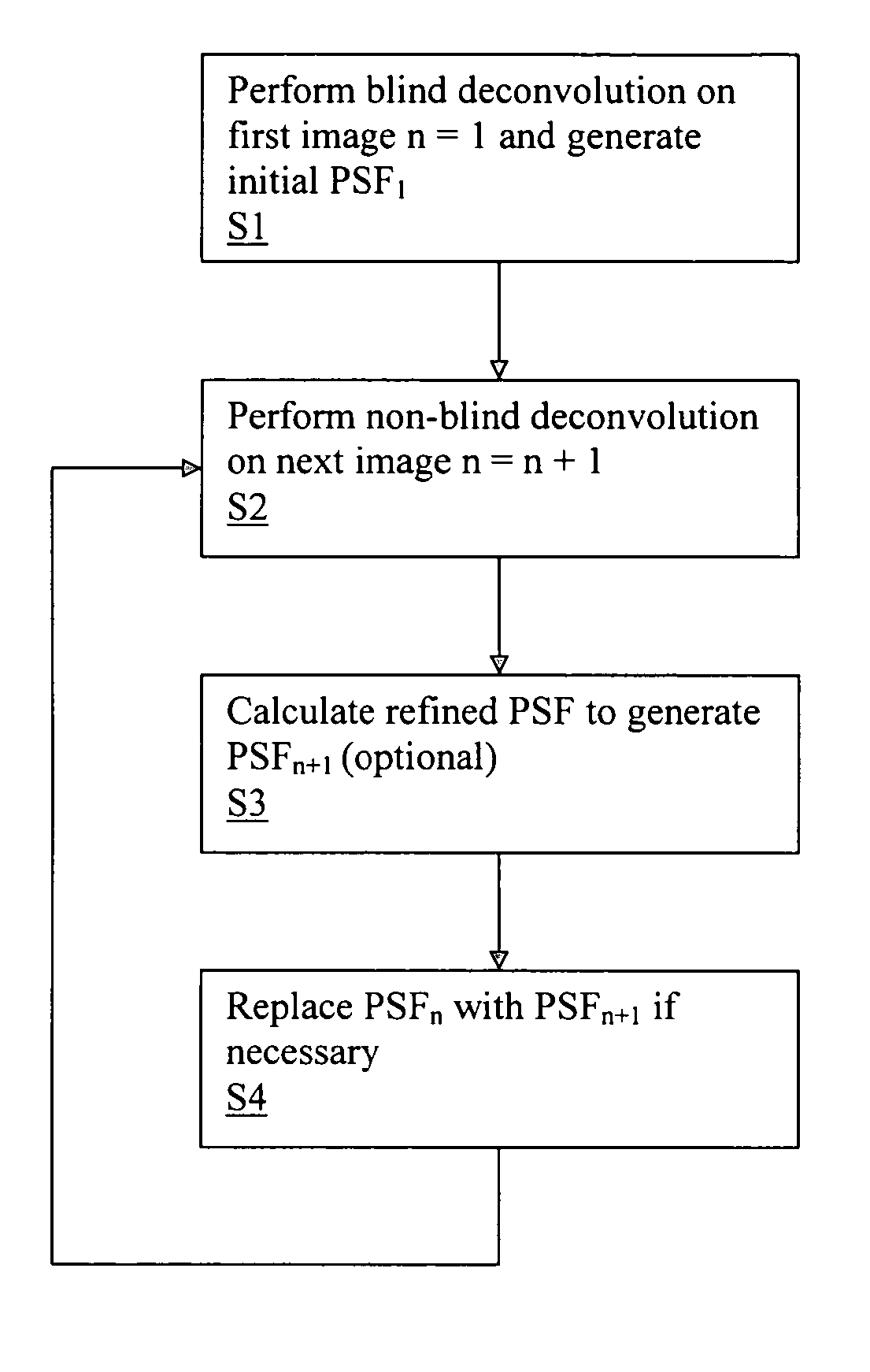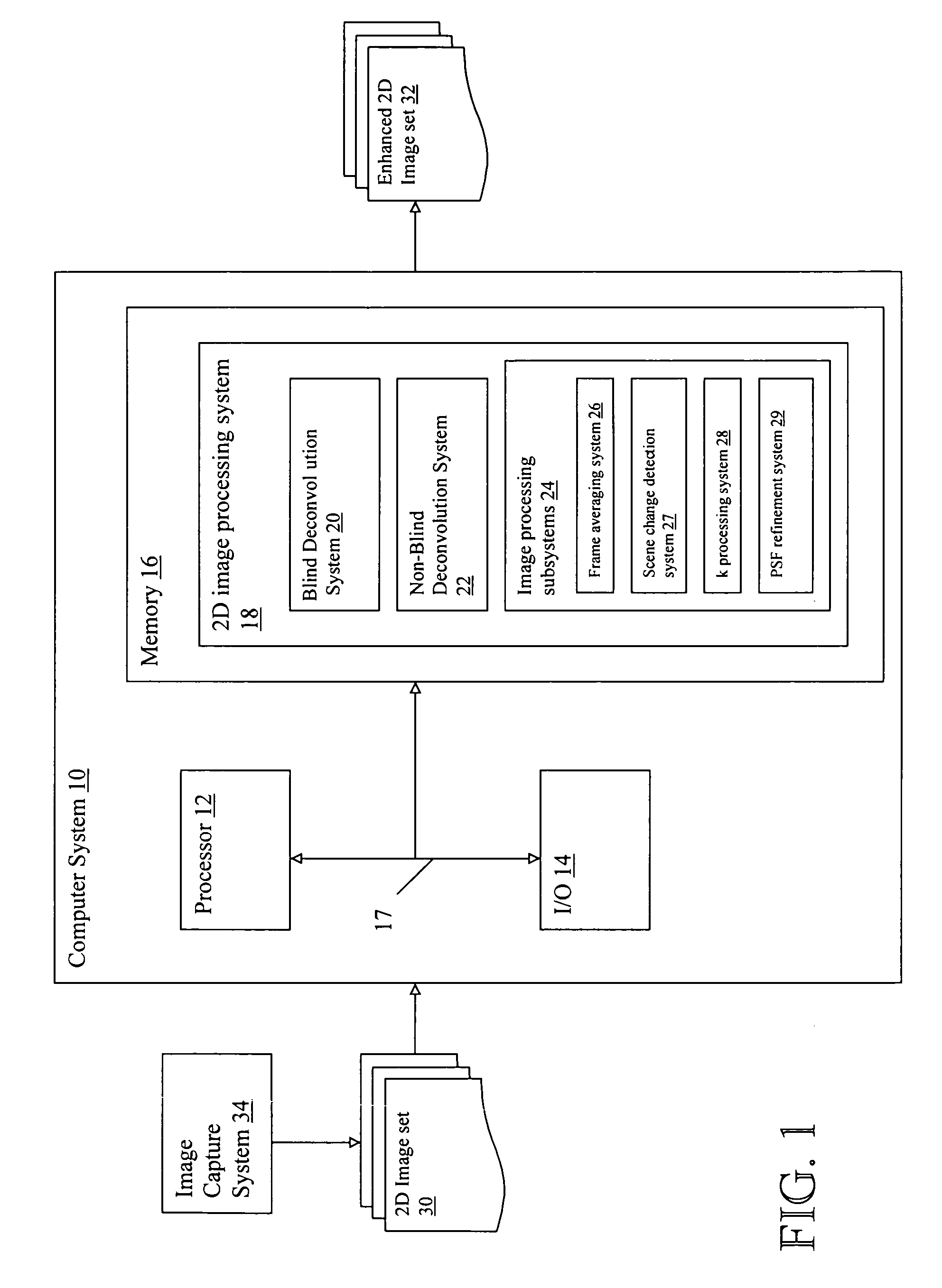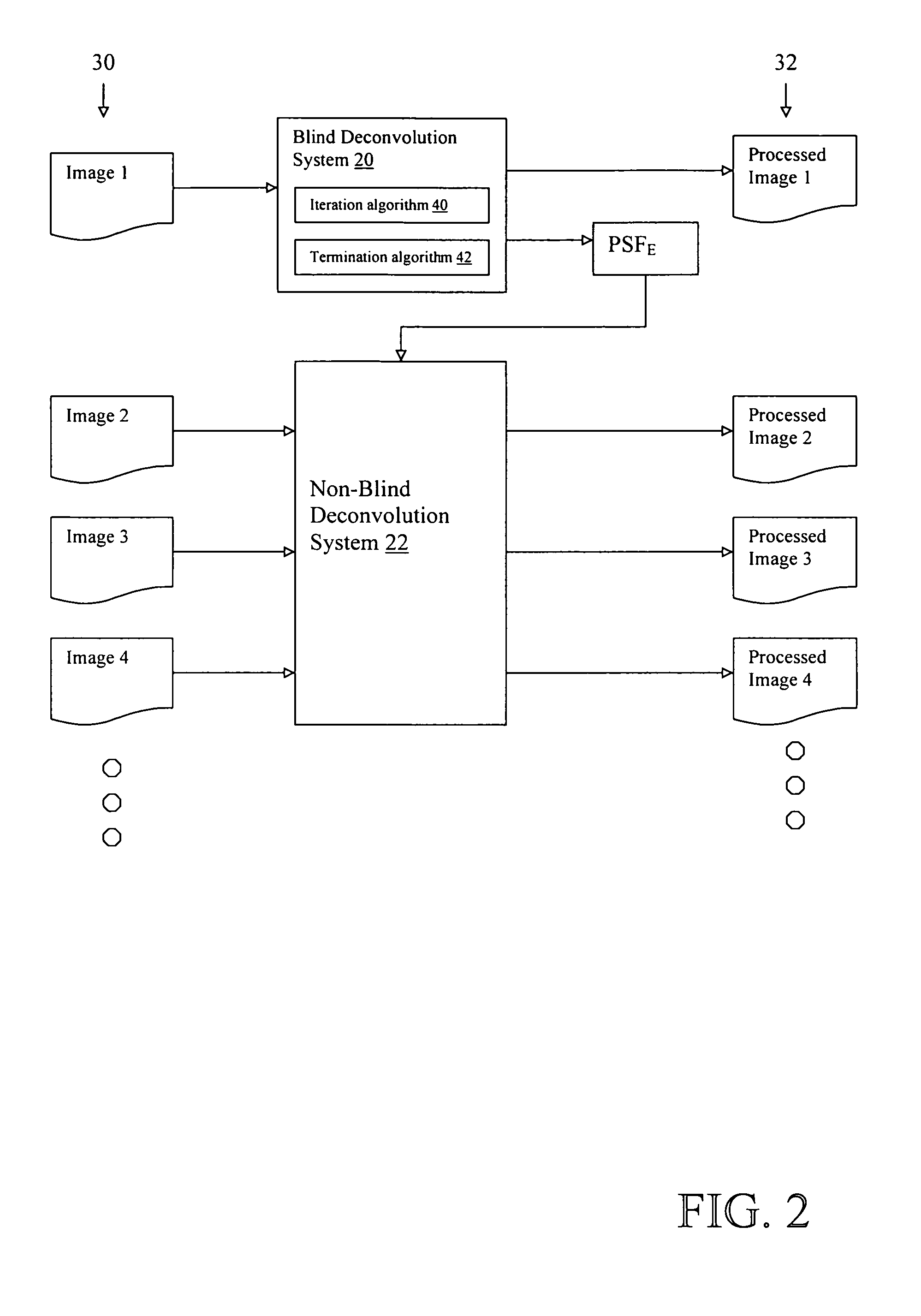Realtime 2D deconvolution system and method
a deconvolution system and real-time technology, applied in the field of processing two-dimensional images, can solve the problems of reducing contrast, resolution, and clarity of images, and image captured by digital cameras, which is inherently two-dimensional in nature, and is subject to such defects, and achieves the effect of fast and simple computation
- Summary
- Abstract
- Description
- Claims
- Application Information
AI Technical Summary
Benefits of technology
Problems solved by technology
Method used
Image
Examples
Embodiment Construction
[0018] Referring now Lo FIG. 1, a computer system 10 is shown having a two dimensional (2D) image processing system 18 for processing a 2D image set 30. 2D image set 30 may for example comprise a video or image sequence of a biological specimen provided by an image capture system 34. Image capture system 34 may comprise any type of optic device, e.g., digital camera, scanner, microscopy system, telescope, etc., capable of obtaining and / or generating the 2D image set 30.
[0019] 2D image processing system 18 uses both a blind deconvolution system 20 and a non-blind deconvolution system 22 to generate an enhanced 2D image set 32 that allows for real time (or near real time) viewing. As will be described in further detail below, blind convolution system 20 provides a first algorithm that is applied to a first image in the 2D image set 30. Non-blind deconvolution system 22 provides a second algorithm that is applied to each subsequent image in the 2D image set 30. Blind deconvolution sys...
PUM
 Login to View More
Login to View More Abstract
Description
Claims
Application Information
 Login to View More
Login to View More - R&D
- Intellectual Property
- Life Sciences
- Materials
- Tech Scout
- Unparalleled Data Quality
- Higher Quality Content
- 60% Fewer Hallucinations
Browse by: Latest US Patents, China's latest patents, Technical Efficacy Thesaurus, Application Domain, Technology Topic, Popular Technical Reports.
© 2025 PatSnap. All rights reserved.Legal|Privacy policy|Modern Slavery Act Transparency Statement|Sitemap|About US| Contact US: help@patsnap.com



